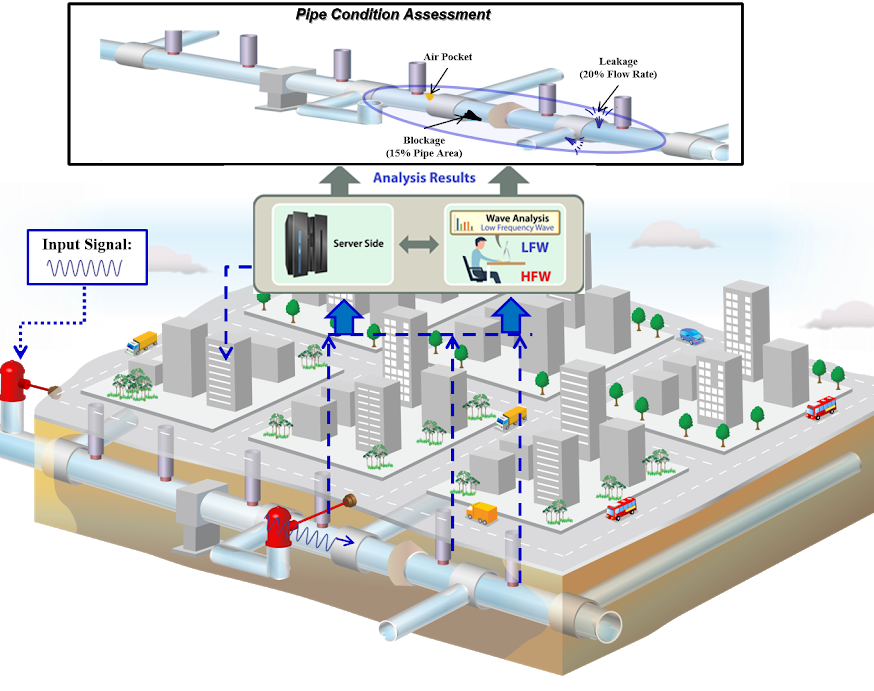In the Pipeline


Beneath the bustling urban metropolis of Hong Kong lies 7,500 kilometers of water pipes – the very lifelines that serve a growing population of over 7.3 million. Leaks or bursts that require pipe replacement contribute to business losses, social disruption and costly fixes. Making sure the aging infrastructure is in healthy shape and detecting potential problems before they become actual problems are of vital importance.
Overcoming these issues is the focus of Prof Mohamed S Ghidaoui and his team in a large-scale Theme-based Research Project. By showing that waves in pipe systems are time reversible, they seek to exploit this intriguing property to build a “smart” real-time diagnostic management platform for pipelines using pressure waves. Analogous to a doctor conducting an ultrasound scan in a clinic, these pressure waves are used to diagnose the ‘health’ of the pipe system and detect areas of potential failure in the forms of leaks, blockages and pipe deterioration. The new technologies that are emerging from this project are being tested in the field in Hong Kong, and the results are highly promising. Early detection and maintenance will offset the costs associated with pipe replacement.
Their technology will eventually be transferable to any pipe system in the world, taking smart urban water supply systems to the next level of efficiency, cost-effectiveness and sustainability.
Prof Mohamed Ghidaoui is Chinese Estates Professor of Engineering and Chair Professor of Department of Civil and Environmental Engineering. He is a recipient of the Arthur Thomas Ippen Award. Prof Ghidaoui serves as the Editor in Chief of the Journal of Hydraulic Research, IAHR. He also serves as the Associate Editor of the Journal of Hydraulic Engineering, ASCE; and Journal of Hydro-environment Research, IAHR. He is an editorial board member of the Theoretical & Applied Mechanics Letters (TAML), Chinese Academy of Sciences and The Chinese Academy of Theoretical and Applied Mechanics and served as an advisory board of the Journal of Hydroinformatics for 12 years.